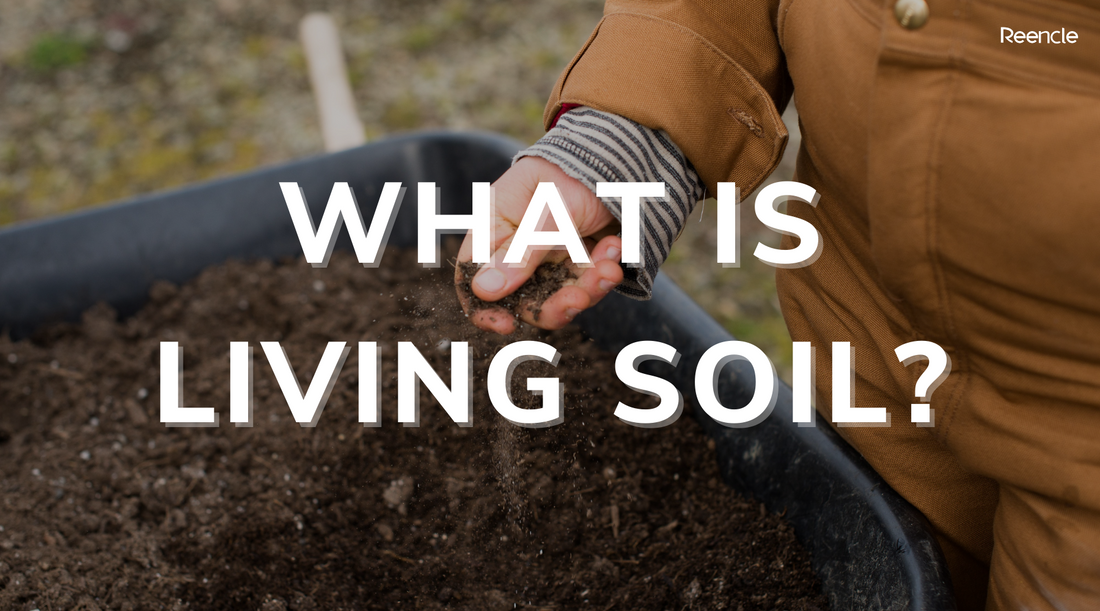Living Soil
We all know by now that soil is extremely important for life overall. What about living soil, though? Living soil is basically soil that is full of life. It contains a community of microbes that work together to break down organic matter. This action does wonders to provide much-needed nutrients to plants.
Living soil can happen naturally over time but has to be intentionally cultivated to be the powerhouse for plants that it is. While regular soil does have microbes, living soil contains the optimal environment for the growth of microorganisms like fungi, bacteria, and protozoa, as well as nematodes*, arthropods* and earthworms.
*Nematodes can be found in soil and function as pest-organism regulators, besides also mineralizing nutrients into plants. They also act as a food source for other organisms.
*Arthropods are invertebrate animals with jointed legs, and have several roles in soil. They maintain overall soil fertility and are involved in many processes like soil formation, decomposition, nutrient cycling and more.

Photo Credit: Noah Buscher
The difference between soil and dirt mainly lies in its location. While it’s on the ground, it remains living soil - a title it becomes void of when it no longer stays there. For instance, as soon as your living soil leaves the garden and gets onto your hands or clothes, it becomes mere dirt. This begs the question, what is the difference between soil and dirt?
Soil VS Dirt
To put it simply, dirt itself is dead. There is no active life happening in it, and it’s made up of sand, clay, silt and even some rocks/stones at times. None of the nutrients or minerals nor the microbes found in soil can be found in dirt. Unlike living soil, there is no organised ecosystem within the dirt, nor is there any structure or texture. This is why a handful of wet dirt wouldn’t hold a shape unlike a handful of wet soil.
However, this is not necessarily an unfortunate occurrence. That is because all soil starts off as dirt. You can never get nutrient-rich soil without first having dirt. Soil formation is affected by a few different factors, such as time, climate and landscape amongst other things. There is however no need for a complex arrangement in order to make soil, as all you need are the living organisms that turn dirt into living soil.

Photo Credit: Dylan De Jonge
Benefits of Living Soil
-
Retains Nutrients
The retention of nutrients in the soil is important in order to avoid leaching from occurring. Leaching is when there is a loss of water-soluble plant nutrients from the soil. This loss is usually caused by rain and irrigation*.
*Irrigation is the supply of water to land or to crops, generally via channels.
-
Builds Soil Structure
Living soil also has well-structured root systems, which make space for oxygen, water and nutrients to move easily through them. Besides being important for plant health and growth, good soil structure also improves drainage and reduces soil erosion. The lack of soil structure can cause soil to be anaerobic, and experience water-logging* and nutrient lock-up; all of which lead to plant death.
*Water-logging is when something is saturated with water.
-
Cycle Nutrients
A nutrient cycle is the exchange of organic and inorganic matter back into matter production. This occurs when nutrients in the soil are taken by plants which are then consumed by humans or animals. This is then released back into the environment, thus completing the cycle of nutrients.

Photo Credit: Zoe Schaeffer
All that being said, it’s important to understand the layers that go into healthy soil (both literally and figuratively), as this is key to your plant’s health. So many benefits can be derived from healthy living soil; hopefully, this blog post was able to enlighten you about some of them!
If you’d like to watch bite-sized edutainment videos, check out Reencle on Tiktok! We also post regularly on Instagram and Facebook and would love to interact with you on those platforms, too!

